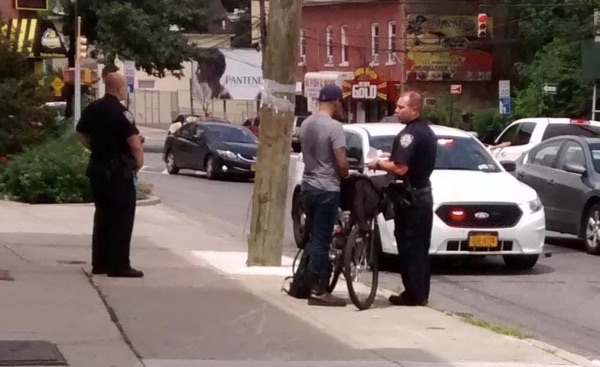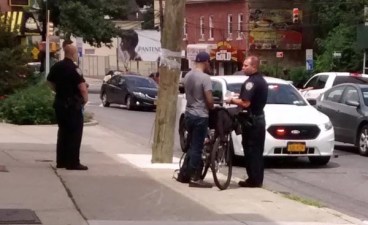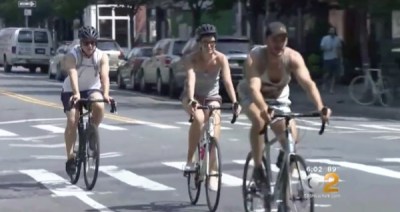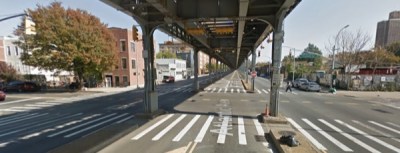NYPD: Ticketing Cyclists After a Driver Kills a Cyclist Is “Strategy,” Not “Targeting Victims”
There's no data to back up NYPD's typical enforcement response to fatal crashes.

NYPD and City Hall have produced no evidence that ticketing bike riders after a motorist kills a cyclist makes streets safer, and 835 people have signed a petition to put an end to the practice. Yet that hasn’t stopped police from targeting potential victims in the aftermath of a fatal crash.
In July, NYPD didn’t even ticket the Action Carting driver who killed cyclist Neftaly Ramirez on Franklin Street in Greenpoint and left the scene. But according to DNAinfo, the 94th Precinct ticketed nine people on bikes on Franklin in the 72 hours after the crash. Cops cited three truck drivers during that time period, DNAinfo reported.
“It’s a strategy,” said Assistant Chief Jeffrey Maddrey, head of Brooklyn North Patrol, who described officers posting up near the location of pedestrian and cyclist fatalities to talk to people about traffic safety. They then issue tickets to people they see running red lights.
“We don’t target victims. We target people who commit violations,” he said.
The assumption among NYPD brass seems to be that they’re protecting cyclists from themselves. But it’s preposterous to think people walking and biking will fear a ticket more than being battered by a motor vehicle.
Maddrey says NYPD doesn’t “target victims,” but how else would you describe a system that primarily penalizes the people at risk of harm?
Here’s the NYPD “strategy” in action. When a tour bus driver killed cyclist Dan Hanegby in Chelsea last June, NYPD blamed Hanegby and the 10th Precinct ticketed people on bikes. Five days later, a tour bus driver killed cyclist Michael Mamoukakis, also in the 10th Precinct.
Contrary to NYPD claims that Hanegby was riding erratically, video obtained by his family showed he was sideswiped as the bus driver attempted to pass from behind. NYPD’s account and media coverage of the Mamoukakis crash suggested he, too, had the right of way, though no charges were filed against the driver (a Streetsblog query to District Attorney Cy Vance’s office concerning the crash went unanswered).
The bus operators who killed Hanegby and Mamoukakis were both driving on streets that are supposed to be off-limits to buses. NYPD could have enforced proper bus routes after Hanegby was killed. Police chose to ticket cyclists, and days later another bus driver ended Mamoukakis’s life a few blocks away.
If NYPD and City Hall have any proof that ticketing people on bikes makes them safer, they haven’t shared it.
Last year, Transportation Alternatives asked NYPD for data on summonses issued to cyclists and drivers after a crash, and for evidence that the policy helps prevent crashes. NYPD produced nothing. In July, after Ramirez was killed, Streetsblog asked City Hall for evidence that NYPD’s post-fatality bike ticket blitzes improve safety. We received no response.
In the absence of any data showing that NYPD’s strategy is making a difference, it’s fair to say the department is systematically blaming victims.



